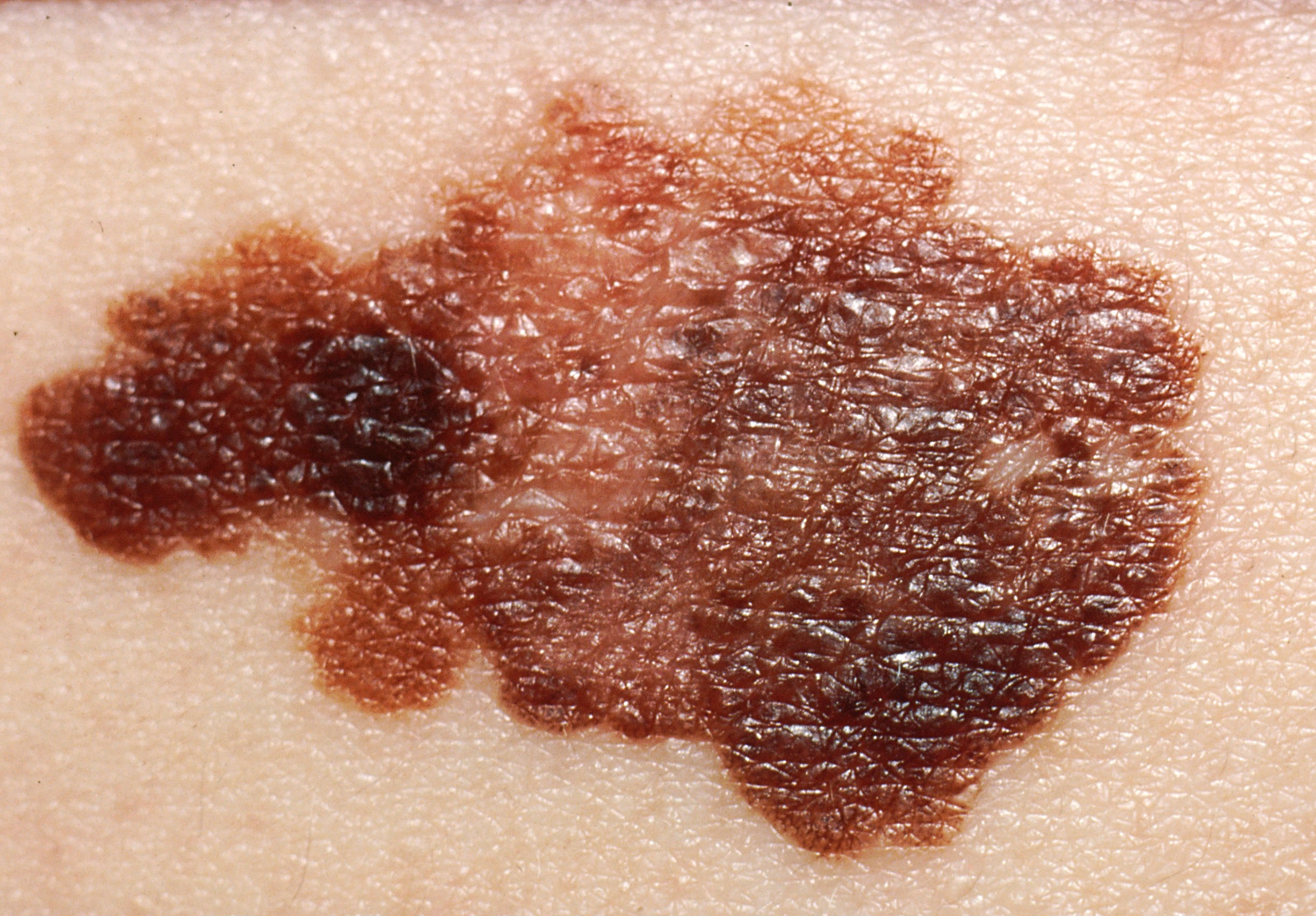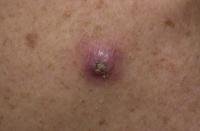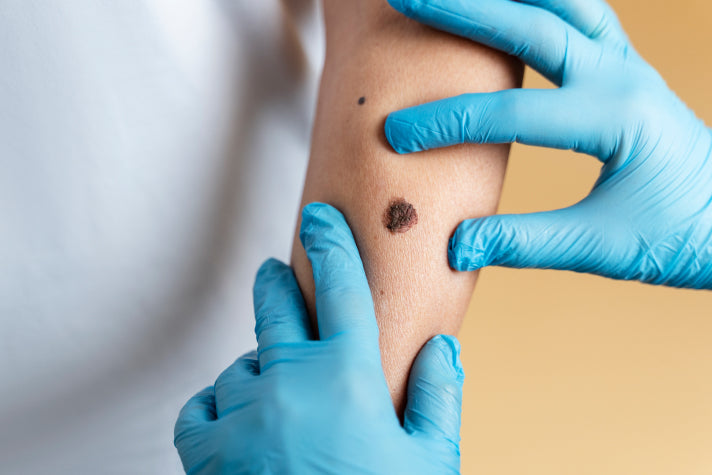Skin Cancer

What is skin cancer?
Cancer of any type is an overgrowth or abnormal proliferation of a specific type of cell. Skin cancers represent an abnormal growth of skin cells. Different types of skin cancers represent different overgrowth of different types of skin cells.
Skin cancer occurs in all races and patient populations, but those with lighter skin and those who burn easily in the sun are more likely to be diagnosed with a skin cancer. 1 in 5 or 20% of the population will develop skin cancer in their lifetime.
Basal Cell Carcinoma
Basal cell carcinoma is the most common form of skin cancer. Basal cell carcinoma is most likely to occur on areas of the skin that have been frequently sunburnt, especially the nose. They present as pearly, shiny, pink bumps oftentimes mistaken for non-healing scrapes or zits. While basal cell carcinoma tends to be slow growing, they do continue to grow over time and can invade surrounding structures. Therefore, diagnosis and treatment of basal cell carcinoma is important.
What are the warning signs for melanoma?
The ABCDEs of melanoma are an important tool in the early diagnosis of melanoma. The ABCDEs of melanoma are as follows:
- Asymmetry: if you draw a line down the center of the spot, one side is not a mirror image and does not look like the other side
- Borders: the spot has irregular borders; it is growing an arm or leg or has a bite out of it
- Color: spot has multiple colors including different shades of brown, red, white, or black
- Diameter: spot bigger than a pencil eraser (>6mm)
- Evolving : spot changing in size, shape, color
The ABCDEs serve as a guideline for signs a spot may be a melanoma. Not all spots that meet 1-2 of these criteria are melanomas. Most melanomas meet 2-3 of these criteria. These guidelines help patients and physicians to recognize and sample spots concerning for melanoma.
An additional warning sign for melanoma is the "ugly duckling" sign for diagnosing melanoma. Patients and physicians should look for spots and moles that are different from an individual patient's other spots and moles, i.e. the "ugly duckling."

When you look good, you feel good
We offer medical, surgical, and cosmetic dermatology services.
BOOK AN APPOINTMENT

